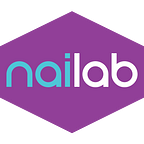A Guide to Choosing the Right Pricing Strategy for Your Business
Pricing is one of the most critical factors in determining the success of a product or service. The right pricing strategy can help you attract customers, maximize profits, and establish your brand in the market. However, choosing the right pricing strategy can be challenging, and entrepreneurs need to consider various factors, such as competition, production costs, target market, and perceived value. This article will discuss four pricing strategies, including Skimming, Premium, Economy, and Penetration, and their advantages and disadvantages to help you make informed decisions.
- Skimming Pricing Strategy
Skimming is a pricing strategy where a company initially sets a high price point for its product or service and then gradually decreases the price over time. This strategy is commonly used for new products or services with high innovation or uniqueness. The goal is to maximize revenue from early adopters who are willing to pay a premium price for the product or service. For example the sale of new phones and Blu-ray releases of films.
Advantages:
- Highest margin generated per customer
- Can increase the perception of quality
- Each decrease in price should increase sales
- No race to the bottom
Disadvantages:
- Competitor activity can move quickly to undercut your price
- Negative brand perception of the price is too high for customers
- Reduced sales potential
- Easy to get wrong
2. Premium Pricing Strategy
Premium pricing is a strategy where a company sets a high price point for a high-quality product or service. This strategy is commonly used by luxury brands or products with a high degree of differentiation. The goal is to create a perception of exclusivity and high value among customers. Examples of Premium Pricing include Apple products and designer clothing.
Advantages:
- Very high margins can be obtained
- Positive brand perception of high quality
- Often high customer satisfaction is due to the perception
Disadvantages:
- Difficult to maintain
- Pressure to innovate and keep up quality
- A big target for cheaper competitors
- Difficult to regain if lost
- Sales can underperform in times of economic difficulties
3. Economy Pricing Strategy
Economy pricing is a strategy where a company sets a low price point for a low-quality product or service. This strategy is commonly used by companies that compete on price or have a high degree of competition. The goal is to undercut competitors and gain market share. Examples of Economy Pricing include: Think twice chain of apparel stores and budget airlines such as Jambojet.
Advantages:
- Rapid market share growth
- This can cause problems for competitors who cannot price match
- Can be used as a gateway product or service to others with higher price points
Disadvantages:
- Difficult to create good margins
- Can be hard to maintain
- Can ignite a race to the bottom between competitors
- Can damage brand perception
4. Penetration Pricing Strategy
Penetration pricing is a strategy where a company sets a low price point for a high-quality product or service. This strategy is commonly used for new products or services to penetrate the market and gain market share quickly. The goal is to create a perception of value and attract early adopters. Examples of Penetration Price Strategy: Any ‘special launch offer’ pricing
Advantages:
- Can boost initial sales
- Can cause a marketing buzz and higher demand
- Increases market awareness for consumers
Disadvantages:
- Lower margins initially
- Longer time to recoup costs of launching the product or service
- Sets an anchored price point in consumers’ minds
Conclusion
Choosing the right pricing strategy is crucial for the success of a product or service. Entrepreneurs should consider various factors, such as production costs, competition and target market.
